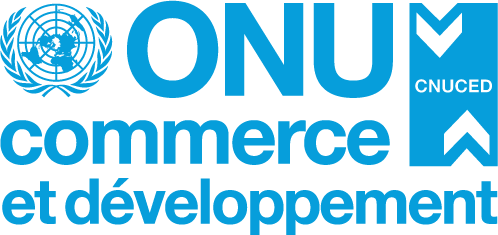UNCTAD is working with national statistical offices to better measure the scale of illegal movements of money across borders to inform firmer policy action.

© Dilok
As the world frantically searches for the funds needed to recover from the COVID-19 crisis and achieve the United Nations Sustainable Development Goals (SDGs), concerns remain that billions of dollars of illicit financial flows (IFFs) will slip through the cracks this year.
A conceptual framework designed by UNCTAD and the UN Office for Drugs and Crime (UNODC) can help governments measure IFFs better and design more effective policy responses.
“The pandemic has made it even more urgent to track illicit financial flows,” UNCTAD’s chief statistician, Steve MacFeely, said. “Without resources, countries will not be able to achieve SDGs, and progress that has been made may even be reversed.”
IFFs refer to the illegal movement of money from one country to another. This occurs not only through organized crime and trade in illegal goods, but also through illegal and illicit tax and commercial practices, such as trade misinvoicing, profit shifting and the transfer of funds to offshore destinations.
A recent UNCTAD report on economic development in Africa found that an estimated $88.6 billion leaves the continent as illicit capital flight – enough to finance almost half the annual financing gap of $200 billion that the continent faces to achieve the SDGs.
It also showed that African countries with high IFFs spend on average 25% less on health and 58% less on education.
“Measuring IFFs is a challenge for developed and developing countries alike, and the lack of statistics undermines policy action with costly consequences,” Mr. MacFeely said on 24 March at a meeting on measuring the informal economy, including IFFs, organized by the UN Economic Commission for Europe.
A new common framework
The urgent task of tackling IFFs is hindered by the fact that the information needed to measure the illicit flows of money cannot be captured by a single data source. And the required statistics and expertise are scattered across many agencies, including central banks, tax and revenue authorities, customs, and ministries of finance and justice.
To help, UNCTAD and the United Nations Office for Drugs and Crime (UNODC) – the custodians of SDG indicator 16.4.1 on IFFs – established an international statistical task force in 2019 to develop common definitions and methodologies to measure the indicator.
The two UN organizations produced the first-ever conceptual framework for the statistical measurement of IFFs, which was approved by the UN’s inter-agency and expert group on SDG indicators and published in October 2020.
The framework defines what IFFs are and identifies four main types of activities that can generate them:
- Illicit tax and commercial activities
- Illegal markets
- Corruption
- Exploitation-type activities and financing of crime and terrorism
The next step
“Now, for the first time, common guidelines exist for the measurement of IFFs in official statistics,” Mr. MacFeely said while presenting the UNCTAD-UNODC framework at the workshop, which gathered more than 160 statisticians from central banks and national statistical offices.
“The next step is to work with national statistical offices so that they plug the data they have into the framework,” he said, adding that UNCTAD is currently working with official statisticians from countries across Africa, Asia and Latin America and the Caribbean.
Sanjiv Mahajan, the meeting’s chair and head of methods and research engagement in national accounts for the United Kingdom’s Office for National Statistics, welcomed the new conceptual framework.
“Having developed a framework and clear definitions forms a significant step forward covering a difficult area of economic activity to measure,” Mr. Mahajan said.
He added that the framework will not only provide clarity on the scope of IFFs but also help improve the quality of key macroeconomic statistics, such as GDP.
“In turn,” he said, “this will better inform policy initiatives such as tackling the missing tax on economic activities.”
More pilots needed
In addition to the framework, UNCTAD has developed new methodological guidelines proposing methods and formulas – with step-by-step instructions – to measure different types of IFFs, including trade misinvoicing, profit shifting and IFFs related to undeclared offshore wealth.
The guidelines, aligned with the system of national accounts and balance of payments, are being finalized for pilot testing in countries in Africa and in Asia and the Pacific.
“While this is a good start, we encourage more countries to get involved,” Mr. MacFeely said.
UNCTAD encourages all interested statistical authorities to test these methods and review their relevance for the types of IFFs affecting their economies. The guidelines will be adjusted based on their feedback.
“Advanced methods are foreseen for countries with good microdata and high statistical capacity, and simpler methods for countries with less data or lower capacity,” Mr. MacFeely said.



